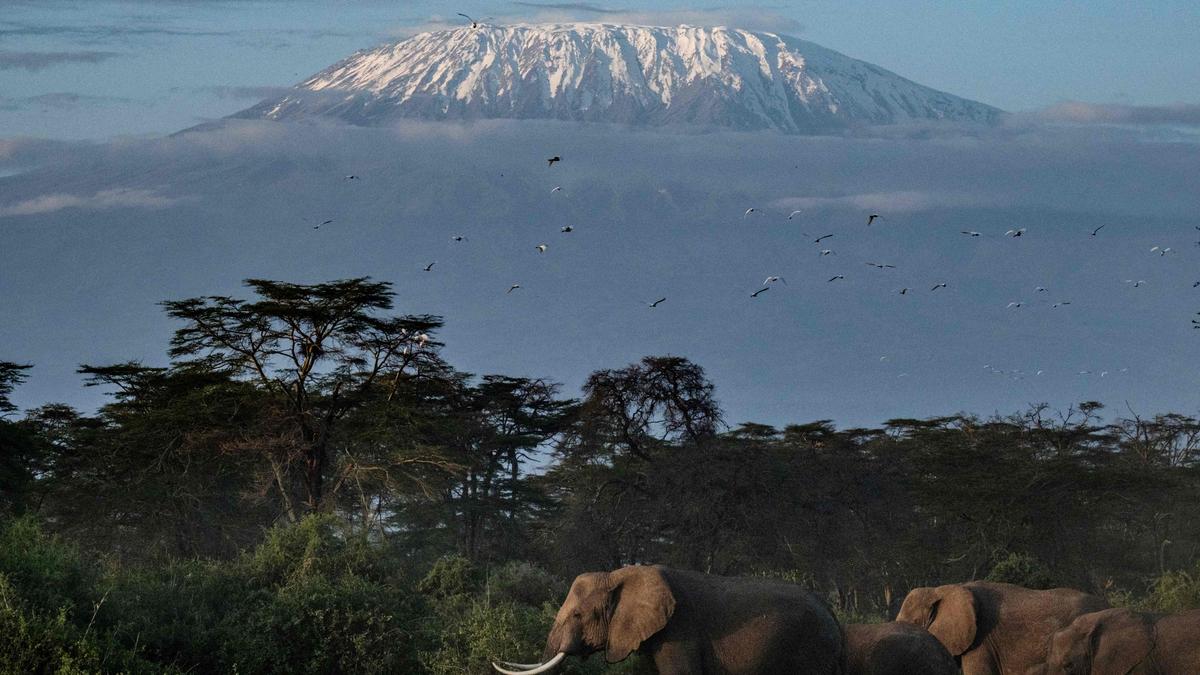
The highs and lows of summiting Mount Kilimanjaro in eight days
The Hindu
At 72, Vidya Singh conquers Kilimanjaro, showcasing her fitness journey through stunning visuals and challenging terrains.
I first see Kilimanjaro from the flight into Tanzania — a stunning sight as it looms above the clouds encircling it. An iconic visual.
As we enter through the little town of Moshe in Tanzania from the Kilimanjaro International Airport, I mentally prepare myself for the trek ahead. At the age of 72, I had trained hard to be able to climb this mountain. Weight training, walking with a six-kilogram weighted vest and climbing the two hills in my city at least twice a week; Tirusulam Hill and St Thomas Mount in Chennai. I also swim two kilometres twice a week. All these build resistance and give you a raised heart rate ; which is useful when you climb at an altitude.
Kilimanjaro is the highest single standing mountain in the world that is not part of a range. The summits are Stella Point at 5,756m and Uhuru Peak at 5,895m. It is also considered to be one of the Seven Summits in Seven Continents.
We are a group of 10 climbers. Six from India (Chennai and Hyderabad), two from Australia and two from Germany. We have a large support staff of 25. The leaders are Bongo and Afrikaan, whose company, Kili Worldborn Safaris is responsible for handling the logistics of the trip, including transportation, accommodation, food and trekking arrangements. There is the chief guide and his assistants, chef and kitchen staff, tent boys, toilet boys and our personal porters who walk with each of us to guide and help us along the trail. This has been arranged by Arjan Kripal Singh and his company in India, Get Up And Go!
We are driven to the start point at the Londorossi Gate of the Lemosho Route, which is a scenic two-day trek that goes through a rain forest. The Lemosho Route crosses the entire Shira Ridge, a plateau that goes from West to East. The climb to the summit and to the last camp takes us eight days of trekking. We have a new camp each night at designated campsites.
We usually begin at 7am and climb for about five to six hours each day. The terrain gradually changes from tropical rain forest to Arctic zone to alpine desert as the trail climbs higher. I often pause to catch my breath and soak in the stunning views, bright with exotic flowers and plants that grow in this harsh terrain.
The trek is challenging. Especially on day three, when we climb from Shira Camp to Moir Hut, and about halfway through the trek, encounter rain. This makes climbing difficult as the stones and rocks become wet and slippery. Rain water flows down the mountainsides, and besides being cold and rather wet, our shoes are drenched. My spirits are down as I climb with cumbersome rain gear on.





















 Run 3 Space | Play Space Running Game
Run 3 Space | Play Space Running Game Traffic Jam 3D | Online Racing Game
Traffic Jam 3D | Online Racing Game Duck Hunt | Play Old Classic Game
Duck Hunt | Play Old Classic Game











